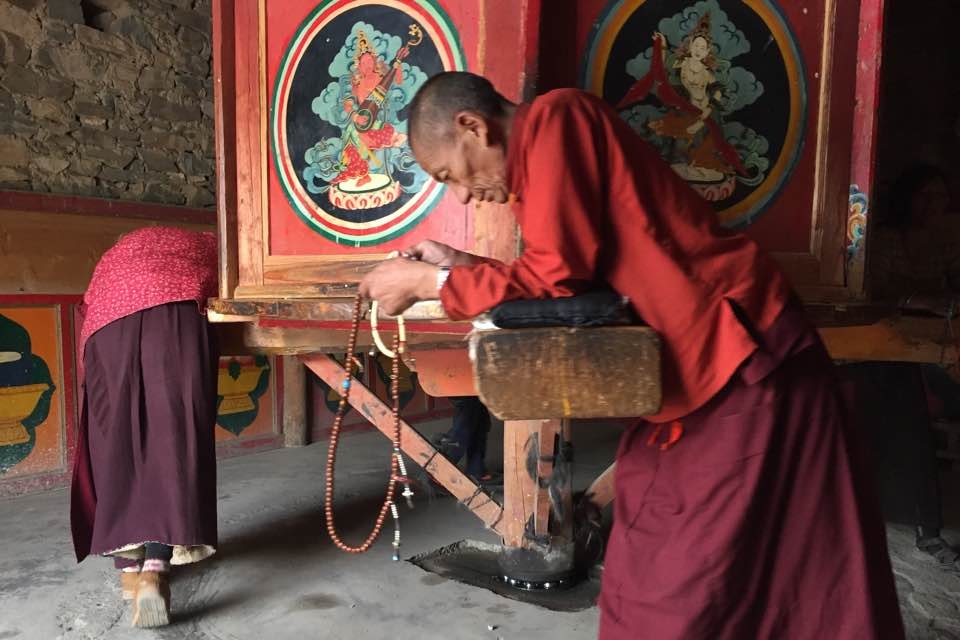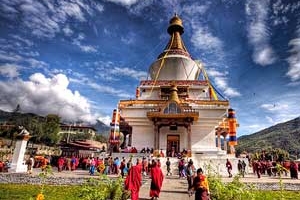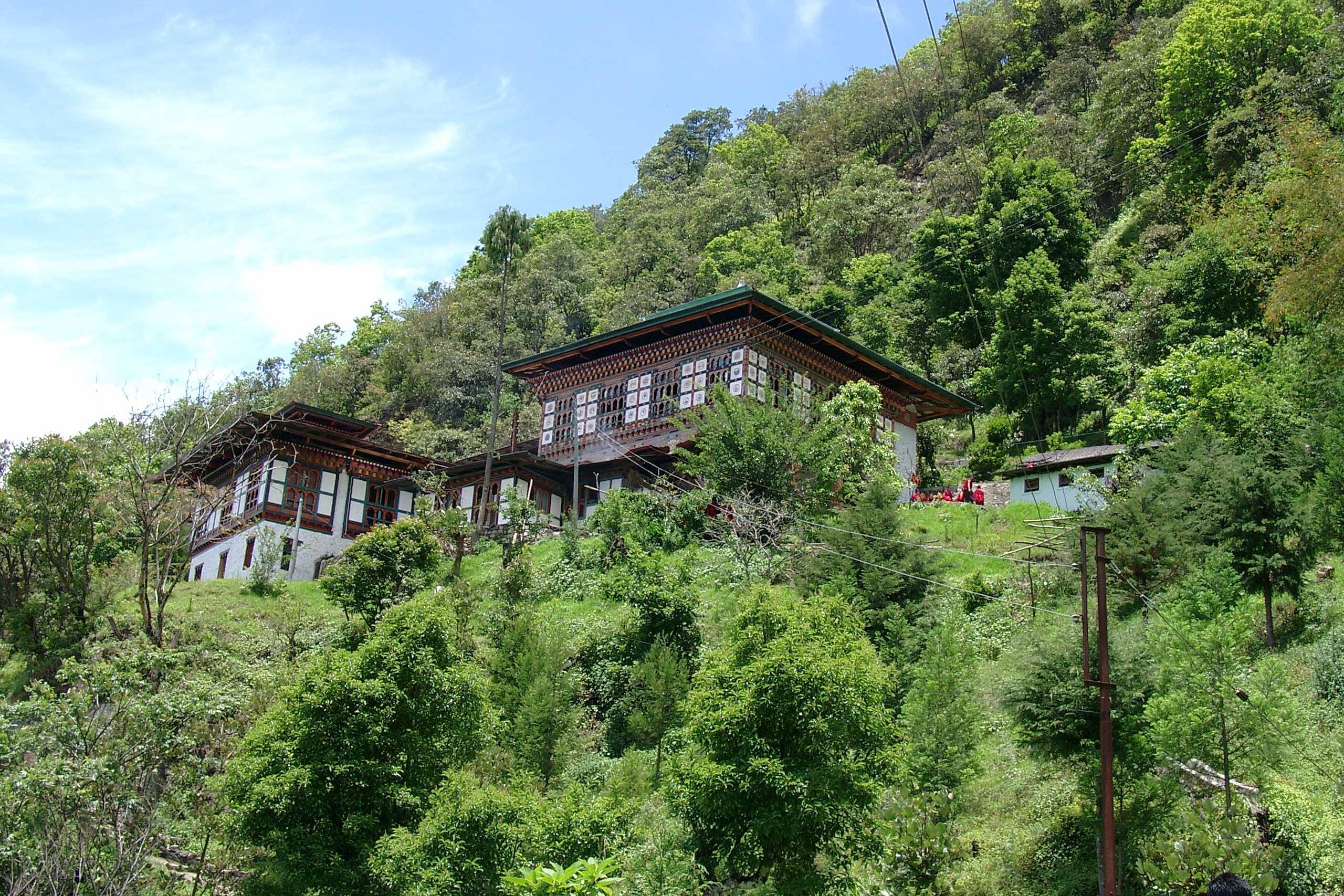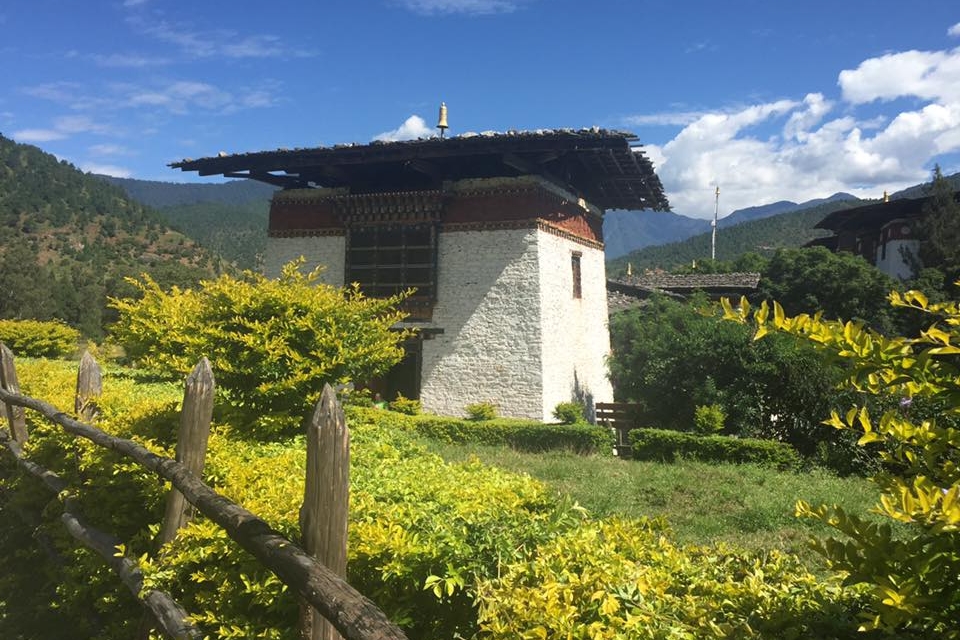Embarking our tour, we fly over to the dragon kingdom Paro. We fly over passing by Mountains of 5500 meters to Paro. Paro is a beautiful valley and is home to many of Bhutan’s oldest monasteries and temples, and the country’s only international airport. The flight to Paro is one of the most spectacular mountain flights in the world, with a constantly changing panorama of some of the highest mountains on earth including Chomolhari and Jitchu Drake peak. Paro Airport has been described as “the most difficult commercial airport in the world”. 1980meter runway length presents a double challenge, due to the extremely low density altitude at the site. So, only a handful of well experienced pilots are certified to operate commercial airplanes here thus, making least number of flights in a day. After immigration and custom formalities, check out from the departure lounge. There you will meet one of the representatives of Nature Trail Travels & Tours, Trekking & Expeditionwho will greet you and then escort you to your respective hotel where you will stay overnight. Before dinner at the hotel there will be an orientation on Bhutanese etiquette by your guide.



On the second day of your tour, you will have a short hike up to Taktsang monastery. Taktsang is a prominent sacred Buddhist site and temple complex perched on the edge of upper Paro Valley. It is also known as the Tiger’s Nest. This magical monastery clings to a vertical granite cliff 300 meter above the valley.Legend has it that the great Guru Padmasambhava flew to this spot on back of a tigress and meditated in a cave during the 8th century. When the Guru finished his meditation, he instructed that the monastery to be built. The temple was built around the cave and is a hallowed shrine for Bhutanese pilgrims.The spectacular view along the way and the historical sites draw many tourists to this imposing monastery. There are also a number of temples scattered along the route. Later we’ll turn to the Paro Dzong, a large Buddhist monastery and fortress, which is considered the best example of Bhutanese architecture. Now it also houses the district Monastic Body and government administrative offices. On the hill above the Dzong stands an ancient watchtower called Ta Dzong, which is the National Museum of Bhutan. Visit Ta Dzong Museum housing many religious relics, works of art and handicrafts offering a great orientation into Bhutan’s historical, cultural, and religious past.This Dzong was converted into the National Museum in 1968. The museum boasts antique thangkas, textiles, weapons and armor, household objects and rich assortment of natural and historic artifacts.Here you can also learn about Bhutan’s history. After this hike and a short sightseeing tour, we drive to Thimphu following the Pachu River. Once a rustic village sitting in a broad, fertile river valley, Thimphu is today the nation’s bustling capital. We will stay overnight at Thimphu.



After appetizing breakfast, we will proceed for full day sightseeing tour in Thimphu. Initially, we start our sightseeing tour with a visit toNational Memorial Chorten. This temple was first initiated by the Third King as a protection from the negative elements of modernization, and as a monument to world peace. The Royal Queen Mother completed it as a memorial Stupa for the Third King who passed away in 1972. Then we will continue our visit to 12th century Changangkha Temple and Drubthob monasteryhousing the Zilukha Nunnery. If you want to see Takin, the national animal of Bhutan then you can proceed onto mini-zoo. The Takin (a goat-antelope) was declared the national animal of Bhutan because it is strongly associated with the country’s religious history and mythology. After sightseeing of these sites, if you still have some time left then you can visit to National Library, the priceless collection of Buddhist manuscripts and few English version books; Folk and Heritage Museum, which displays day to day livelihood of typical Bhutanese farmers in medieval period and their accessories; Late King’s Memorial Stupa, built for the world peace and Traditional Handmade Paper Factory; Painting School, which preserves our traditional paintings, sculpturing and wood curving and National Handicraft Emporium, the best place to look for souvenir from Bhutan. You can also visit the Rinpung Dzong, meaning ‘fortress of the heap of jewels’ to see the painting of the great saint Milarepa, considered as the master of meditation by the Bhutanese and believed to have attained enlightenment in a lifetime. The Dzong is now used as an administration center and school for monks. Dzong’s are large monasteries and district administrative centers, which were once strategic forts. Some of the landmarks are closed on the weekend (Saturdays and Sundays). Therefore, if your visit to Thimphu coincides with the weekend, you can walk through the Thimphu Market to see the variety of food of Bhutan, including basket upon basket of fiery chilies, cheese and a variety of greens. (This market is open only from Friday-Sunday).



Today, we drive for about half an hour in order to reach Wangdue. Wangdue Phodrang Dzong is perched on a spur at the confluence of two rivers. Itrepresents an important gateway to Eastern Bhutan. High on a promontory overlooking the river, this Dzong, founded in 1639, controlled the routes to Trongsa, Punakha, Dagana, and Thimphu.The position of the Dzong is remarkable as it completely covers the spur and commands an impressive view over both the north-south and east-west roads.Punakha and Wangdue Phodrang are administrative centers of their respective Dzongkhang or districts. Compared to Thimphu or Paro, the valley is at much lower elevation at about 1250meter above sea level. Therefore it enjoys subtropical climate with warm summer and pleasant winter. The valley boasts at least two crops a year and subtropical plants like Cactuses, Manadrin, and Bananas grow here. The town of Punakha was relocated recently to Khuruthang from its location near Punakha Dzong. Punakha was former winter capital of Bhutan, the tradition that is still kept by the monastic body, who moves their capital to Thimphu in the summer and return to Punakha Dzong in the winter. It is around half hour drive between Punakha and Wangdue Phodrang. The small township of Wangdue with clusters of small shops tightly packed together, surrounding a truck stop is quite interesting to visit. Across the river, on the opposite ridge is the village of Richen gang, known for cluster of houses connected to one another.Iftime permits, the journey can be broken with a visit to Tamchhu Lhakhang built by Thangtong Gyalpo, the so-called Iron Bridge Builder. You can continue down the winding pass to the town of Wang duePhodrang. After sightseeing tour, we drive to Thimphu for our overnight stay.



Today we drive to Paro after sightseeing tour at Punakha. Punakha one of Bhutan’s best agricultural regions, was Bhutan’s capital until 1955, and even now is the winter home for the country’s central monk body. Exquisitely beautiful paintings, fine carvings of wood and brass and stone are some of the Bhutanese architecture that one can explore. You can visit KhamsumYuele, Namgyal Chorten, built by the Royal family. You can also visit Punakha Dzong, built in 1637 by the Shabdrung, the ‘Unifier of Bhutan’ as predicted by the great Guru Rinpoche (Padmasambhava). It is situated at the confluence of the Mo Chu and Pho Chu (Mother and Father Rivers) and is the winter headquarters of the Je Khenpo and hundreds of monks who move in masse from Thimphu to this warmer location. The three story main temple of the Punakha Dzong is a breathtaking example of traditional architecture with four intricately embossed entrance pillars crafted from cypress and decorated in gold and silver.



On this day, we will have a full day sightseeing tour in Paro. You can visit the Rinpung Dzong, meaning ‘fortress of the heap of jewels’ to see the painting of the great saint Milarepa, considered as the master of meditation by the Bhutanese and believed to have attained enlightenment in a lifetime. The Dzong is now used as an administration center and school for monks. Dzong’s are large monasteries and district administrative centers, which were once strategic forts. Afterwards, we’ll go to Takin Sanctuary and Zilukha Nunnery. The Takin (a goat-antelope) was declared the national animal of Bhutan because it is strongly associated with the country’s religious history and mythology. Today’s last destination is Thimphu Dzong (Tashichho Dzong), a Buddhist monastery and fortress. It also houses Bhutan’s central government. Then drive to Thimphu following the Pachu River. Once a rustic village sitting in a broad, fertile river valley, Thimphu is today the nation’s bustling capital. Before dinner at the hotel there will be an orientation on Bhutanese etiquette by your guide. Stay overnight at Thimphu.



Concluding our trip,we depart from Paro. Following breakfast you are transferred to the airport depending upon your flight schedule where your tour comes to an end.






Discover incredible offers for your upcoming adventure by subscribing to our newsletter with the latest travel tips and updates.
